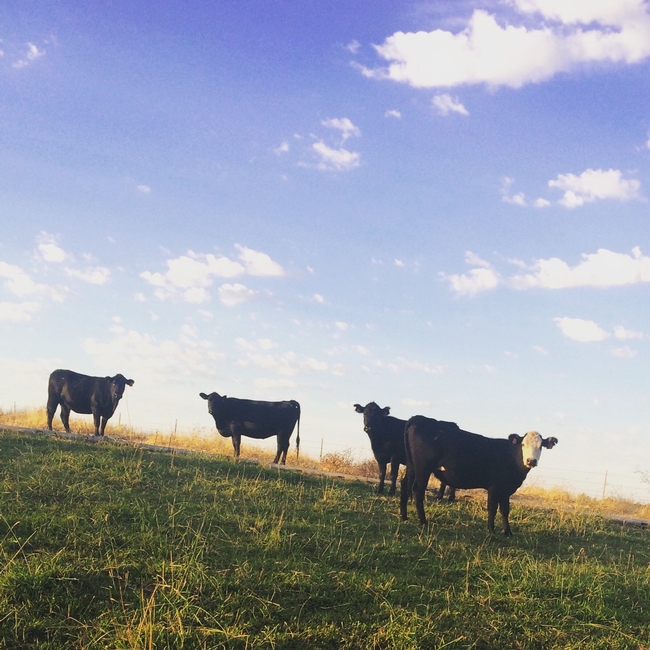Short- and Long-term Stock Water Strategies
On a day that started with a long-overdue rainstorm here in Auburn, I received word that USDA Secretary Tom Vilsack had declared a drought disaster in 50 of California's 58 counties – including Placer, Nevada, Sutter, and Yuba. The announcement doesn't come as a huge surprise for anyone who's been grazing livestock on annual rangelands this winter, but the official designation does come with the possibility of emergency assistance through the Farm Service Agency (click here for a directory of local FSA offices).
While ranch drought management is fundamentally about creating flexibility to balance demand (that is, the number mouths we have grazing) with supply (the amount of grass we have available), my own experience suggests that drought presents a complicated set of problems. Our forage demand changes with our production calendar – the lactating ewes we're grazing today need more forage than they did back in November. And quantity isn't the only variable that concerns us – lactating ewes also need high quality forage from a nutritional standpoint. Drought can impact both.
Drought impacts, then, are more complicated that below-average rainfall, obviously. Rain and forage production are related, but on our annual rangelands, the timing of the rain is nearly as important as the quantity. We'll likely end up with an inch of rain out of the series of storms we've enjoyed this week – enough to keep our grass growing.
As I was moving sheep this morning, however, I checked the small seasonal creek that runs through several of our winter pastures. It hasn't flowed all winter, and this most recent shot of rain wasn't enough to get it started. Talking to ranchers throughout my four counties, I would say that the soil profile never really filled enough to get the creeks running – or the stock-ponds filling – anywhere in the foothills. Operations that saved dry feed for the fall couldn't access some of it for lack of stock water. Now that the grass is growing, some ranches still don't have enough stock water to use the forage.
With sheep, we're used to hauling drinking water – even on large scale operations. Most cattle producers don't have the equipment to move water to their livestock, however – the quantities required, and the remoteness of some operations, can make this difficult. I spoke to a water truck operator this morning who said he's starting to get calls from foothill ranchers about hauling stock water – a sure sign that conditions are extremely dry. This particular owner-operator can move 3,400 gallons at a time – and he charges $100 per hour plus the cost of the water (for example, a single load of water delivered to Lincoln would cost around $350).
How long would a load of water last? Obviously, stock water demand depends on air temperature, stage of production, and even hide color. Developing a water budget based on stage of production and air temperature can help provide a more accurate estimate of stock water demand for a specific group of cattle (see the chart below).
|
Cattle Wt |
40°F |
50°F |
60°F |
70°F |
80°F |
90°F |
|
LACTATING COWS |
||||||
|
900-1200 LBS |
11.4 g/day |
12.6 g/day |
14.5 g/day |
16.9 g/day |
17.9 g/day |
18.2 g/day |
|
DRY COWS |
||||||
|
1100 LBS |
6.0 g/day |
6.5 g/day |
7.4 g/day |
8.7 g/day |
9.1 g/day |
9.3 g/day |
|
MATURE BULLS |
||||||
|
1600+ LBS |
8.7 g/day |
9.4 g/day |
10.8 g/day |
12.6 g/day |
14.5 g/day |
20.6 g/day |
|
GROWING HEIFERS, STEERS, BULLS |
||||||
|
400 LBS |
4.0 g/day |
4.3 g/day |
5.0 g/day |
5.8 g/day |
6.7 g/day |
9.5 g/day |
|
600 LBS |
5.3 g/day |
5.8 g/day |
6.6 g/day |
7.8 g/day |
8.9 g/day |
12.7 g/day |
|
800 LBS |
7.3 g/day |
7.9 g/day |
9.1 g/day |
10.7 g/day |
12.3 g/day |
17.4 g/day |
Source: 1996 NRC Nutrient Requirements of Beef Cattle
Is hauling water worth the expense? If you've saved forage – or if you have spring forage that you can't use for lack of stock water, it's worth putting pencil to paper. Based on the costs outlined above, here's an estimate of the cost of hauling enough water for 100 pairs on springtime annual rangeland in the Lincoln area - it's not cheap!
|
Number of Cattle (cow-calf pairs) |
100 |
|
Water Demand/Animal Unit/Day |
17 gal |
|
Total Water Demand/Day |
1700 gal |
|
Total Water Demand/Month |
51,000 gal |
|
Water Truck Capacity |
3400 gal |
|
Loads of Water / Month |
15 |
|
Cost/Load |
$350 |
|
Cost/Month |
$5,250 |
|
Cost/AUM |
$53 |
Assumptions
- Water hauling charges are $100/hour plus the cost of the water
- The haul for this example is from Auburn to Lincoln, with water purchased in Wheatland
- Cattle are grazing springtime annual rangeland
- Average daily high temperatures are 70-80F
From a longer term perspective, developing alternative stock water supplies and storage systems is critical for drought flexibility. The Natural Resources Conservation Service can provide technical assistance and perhaps even cost-share funding to help pay for these types of projects (click here for a directory of local NRCS offices).
If you'd like help looking at stock water options this spring, contact me by email (dmacon@ucanr.edu) or call the office (530/889-7385) to set up an appointment!
